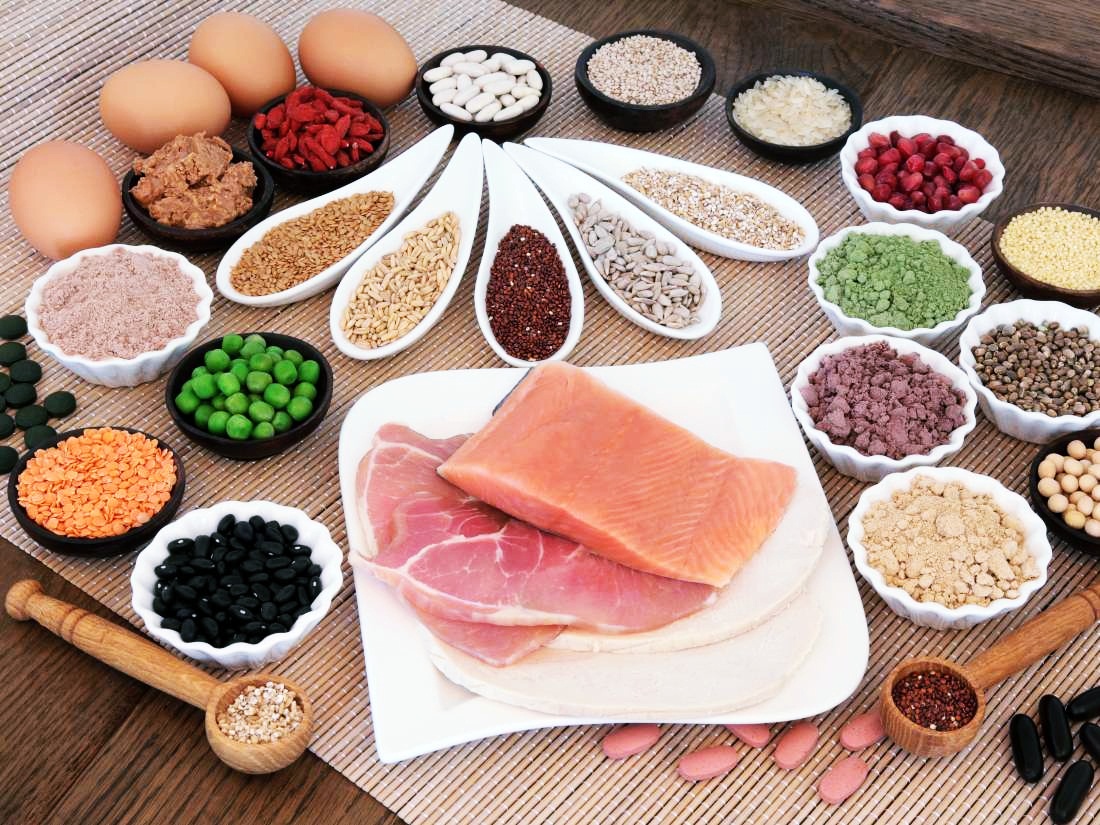[vc_row][vc_column][vc_column_text]Today we will focus our discussion on the benefits of protein and how to determine what source of protein is best for you to consume.
It is easy to become overwhelmed by the amount of information that is available regarding nutrition, including the benefits of protein. There are many different types of diets available, and nutritionists and food scientists are extremely opinionated about what foods to avoid and what foods to eat in large quantities. It is tough to know what information to believe.
Sometimes it seems that half of the articles on the Internet involve nutrition. You really can’t escape it. You get sucked into the Vitamix salesperson’s talk during your trip to Costco, and you are sure you need one of their products so you can eat more pineapple cores and spinach stems.
Then, your sister-in-law starts some new diet that she believes will cure all that ails her, while you secretly hope that her new diet will also help her personality. And you can’t invite your friends over for dinner anymore because someone always has a new diet restriction.
All jokes aside, What is the best diet? What do you need to consume to live your best life? How do you keep from getting sick and tired?
During these confusing times, it is a smart move to go back to the basics. Before there was Atkins, there was an apple. Before there was a Vitamix, there were vegetables. Because nutrition tends to get very complicated, let’s start from the beginning. Let’s look at the food groups that are essential to the body.
Since protein is the food group that receives lots of press right now, we will focus our discussion on the benefits of protein and how to determine what source of protein is best for you to consume. We will also look at the other food groups, even the “evil” carbohydrates. Hopefully, this reminder of basic nutrition science will enable you to wade through all the current diet trends that are out there.
Related Article: Bee Pollen
Benefits of Protein: Macronutrients and Micronutrients
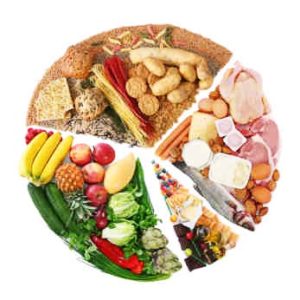

Macronutrients are foods that you need in large quantities to maintain a healthy body. Macronutrients are divided into three categories: protein, carbohydrates, and fats. The ingestion of macronutrients allows us to feel full. They provide us with energy.
Micronutrients are foods that we need small amounts of to enjoy good health. They include vitamins and minerals. While we don’t need as large of quantities of micronutrients, they are essential in keeping our body healthy and helping us digest the macronutrients we consume.
The first macronutrient – Protein
Protein is the cool kid at the party these days. Don’t get me wrong, protein has always been one of the popular kids at school, but right now, protein is Homecoming King. Just look at labels at the grocery store, and you will see that every product wants to claim protein as its own.
The benefits of protein don’t just derive from the meat department anymore.
Protein has been described for decades as a core building block of the body, and even though many of the images used to explain protein have often included cartoon drawings of muscles, protein is actually found in every part of the body. Protein is even found in every cell– including the cells that make up our skin and hair. It is used for growth and maintenance of the body.
Protein comes from the Greek word “protos,” which means first element. No wonder protein has such a big head.
What makes up proteins?
The benefits of protein are so wide spread because proteins are made up of amino acids. Amino acids link together in different ways to create other specific types of proteins that are needed in the body.
Eight amino acids are considered essential to consume in our diet because our body needs them, but it can’t make them on its own. Those amino acids include leucine, isoleucine, valine, threonine, methionine, phenylalanine, tryptophan, and lysine.
As we eat, our body breaks down the proteins through the digestive process. The proteins are broken down into amino acids. The amino acids wander around your body and bump into other amino acids to create new proteins that the body needs.
The amino acids don’t have to arrive at the party in your body at the same time. Your body can create the proteins it needs from amino acids that arrive at different times of the day.
Sixteen percent of a person’s body weight is made from protein.
Related Article: Nutritional Yeast
Sources of protein
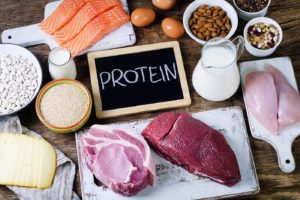

Most would say that the protein with higher value comes from animal sources. These include meat, poultry, fish, eggs, milk, cheese, and yogurt.
You can also get protein from plant sources as well. They include plants, legumes, grains, nuts, seeds, and some vegetables. Plant sources of protein that are eaten in unison tend to provide higher-value protein that is similar to protein from animal sources. Amazingly, the plant proteins combinations that have been popular throughout history are the combinations that work well together to create good protein. They include beans with rice or pasta, chick-peas with bread, and lentils with potatoes. It’s crazy how nature do that.
In other words, if you are vegan, you need to make sure you are ingesting proteins from different vegetable sources to make sure that all the amino acids that your body needs are attained.
How much protein do you need?


Are you meeting the RDA of protein in your diet?
Most likely, if you are a typical American, you are receiving the appropriate amount of protein each day. The average American female eats 68 grams of protein each day.
Should you eat more protein?
The diet trends that are popular now say that eating more protein than the RDA will help you lose weight. Protein takes longer to digest than carbohydrates. This means that you will eat less overall because you feel full longer. While this diet makes sense, scientists wonder what the long-term results will be.
Even if you are not trying to lose weight (and who isn’t?), it is important that middle-aged people should eat more protein. Protein helps maintain your muscle mass that we tend to lose as we age.
How much protein is in specific foods?


One serving of white rice has 2.6 grams of protein per serving. One serving of white bread has 7.9 grams a protein. Cooked pasta has 7.7 grams of protein per serving. Keep in mind your body needs 46 grams, so it sounds like you need to eat a tremendous amount to receive all the protein you need for your day.
But, as mentioned earlier, the most significant sources of protein are from animal products. One serving of cheddar cheese has 25.4 grams of protein per serving. A grilled rump steak has 31.0 grams of protein per serving.
Before you dump your vegetarian diet, it is worthwhile to note that peanuts have 25.6 grams of protein per serving. Of course, it is possible to have a high-protein diet without using animal sources, but you may have to be a little more vigilant than someone with a less restricted diet. You can receive high protein levels by eating lentils, quinoa, tofu, black beans, pumpkin seeds, almonds, and oats.
Related Article: What is A Holistic Nutritionist
What happens if you don’t get enough protein?
Protein deficiency hardly ever happens in the United States, but it is a concern in developing countries across the world. Not having enough protein in one’s diet leads to protein-energy malnutrition. When a person does not have enough protein or calories, he or she may have a condition called kwashiorkor. Those with an extreme version of this condition often have bloated bellies. Death may follow.
A less extreme version of insufficient protein can cause muscles to diminish. The muscles will lose their strength, begin cramping and feel sore. The reason your body’s muscles decrease when you don’t consume enough protein is that the body pulls the essential protein it needs to function from the existing muscles
Those who do not ingest enough protein will have a hard time healing wounds. Low protein levels cause the body not to produce enough collagen that is needed to heal sores.
A person who does not ingest enough protein is also prone to infections.
Benefits of protein: choosing the right protein
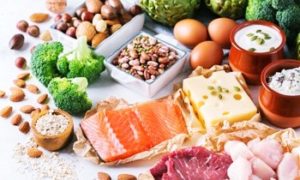

When choosing proteins for your diet, seek out lean meats and poultry. Also consider getting your protein from seafood such as salmon, trout, or sardines.
When eating nuts, try the low-sodium varieties.
While protein is undoubtedly the king of the macronutrients right now and there are so many benefits of protein, it would be ridiculous to discount the importance of carbs.
The Benefits of Carbohydrates
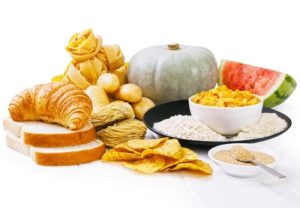

Carbs are sugars, starches, and fibers that are found in vegetables, fruits, grains, and dairy products. Carbohydrates contain carbon, hydrogen, and oxygen.
Why carbs are important?


Carbs are important to your mental health also. Those eating low-carb diets for a year had more anxiety, depression, and anger than people eating a low-fat, high-carb diet.
When a person ingests carbs, they are broken down into smaller units of sugar, such as glucose and fructose. The small intestine absorbs the smaller units of sugar, and then they enter the bloodstream and makes their way to the liver. The liver converts the sugars into glucose and becomes the energy your body needs to do any physical activity.
The liver and skeletal muscles can store up to 2,000 calories of sugars, which are called glycogen. Once the glycogen supply is full, the carbs are stored as fat.
Simple vs. complex carbs
Before you run out and grab a lemon Hostess pie, so you don’t become a member of the mindless masses, it is important to realize that not all carbs are equal. When choosing carbs for your diet, avoid simple carbs and instead turn to complex carbs.
Simple carbs are digested quickly and contain one or two sugars. A single sugar is called a monosaccharide. A carb with two sugars is called disaccharides. Complex Carbohydrates have three or more sugars and are called polysaccharides.
While simple carbs can provide bursts of energy, they also lead to spikes in blood sugar. Monosaccharides like candy and pop can provide these sudden bursts of energy, but they don’t have any vitamins, minerals, or fiber. That’s why these calories are considered empty calories.
Polysaccharides (your desired choice of carbohydrates) include beans, peas, lentils, peanuts, potatoes, corn, whole-grain, and cereals. Other great carb sources include leafy greens, sweet potatoes, berries, citrus fruits, and apples.
Don’t run away from all carbs, but choose them wisely. Choose carbs that are low in calories and high in nutrients. Choose carbs that are high fiber, low in sodium, and low in saturated fat.
On the other hand do not choose carbs that are high in sodium, and full of refined sugars. Avoid carbs that are high in cholesterol and trans fats.
Pay attention to your food’s glycemic index. This measures how quickly and how much a carb raises your body’s blood sugar. People with diabetes are usually aware of the glycemic index of most foods, or at least they should be.
Carbohydrate deficiency
Similar to the benefits of protein, there are many benefits to carbs and not eating enough carbs can cause negative side effects. What happens to people who do not get enough carbs in their diets?
Besides being grumpy and forgetful, a person who does not get enough carbs may suffer from dizziness and weakness. A person who doesn’t eat enough carbs may also not have enough fiber in their diets. A diet low in fiber may cause you to have constipation and other digestive issues.
While diet trends stress the importance of limiting carbs, you can’t or shouldn’t get rid of all the carbs in your diet.
The benefits of fats
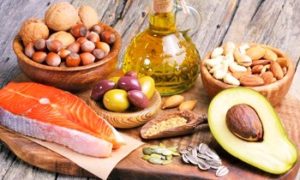

The importance of fat in our diets
Fats store energy and insulate our organs. Plus, they start chemical reactions that help control growth. They also are important in immunity, reproduction, and basic metabolism.
Fats also help store vitamins A, D, E, and K.
Fats should make up less than 30 percent of your calories. If you consume 2,000 calories per day, you should limit your fat consumption to 65 grams. There are nine calories in every gram of fat. And, yes, the type of fat you consume matters.
Types of fats
There are four main types of dietary fat:
- Saturated
- Trans fats
- Monounsaturated
- Polyunsaturated
Saturated fats and trans fats are solid at room temperature. Monounsaturated and polyunsaturated fats are usually liquid at room temperature.
Saturated and trans fats are usually what are called “bad” fats. They raise your bad cholesterol levels in your blood. The good fats (monounsaturated and polyunsaturated) can lower your bad cholesterol levels.
What are sources of good fat? Avocados, cheese, dark chocolate, whole eggs, salmon, trout, mackerel, sardines, nuts, chia seeds, extra virgin olive oil, and coconut oil are all sources of good fat.
Bad fat includes fatty beef, pork, poultry served with the skin on, butter, lard, and creams are all examples of foods containing bad fats. Baked and fried foods also have high levels of saturated fats.
Fats, along with carbs, are not the enemies. Your body needs healthy fats and carbs! Man can’t live on eggs alone.
Micronutrients aka Vitamins


There are 13 vitamins that the body needs to stay healthy.
Sources of vitamins
The list of vitamin-rich foods is long, but I’ll give you a hint of how you can make sure to get plenty of them in your diet. Eat from the produce section of your grocery store. Your mom was right.
Minerals


Sources of minerals
You can get essential minerals in your body by consuming milk and dairy products. You can also get minerals by eating broccoli and dark, green, leafy vegetables.
Even though we have covered the macro and micronutrients, there is one more thing you need to consume to have a healthy body. That thing is water.
Water
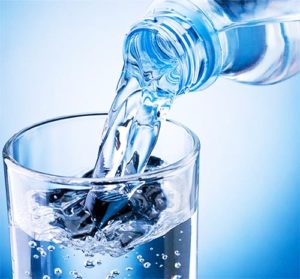

The next time you feel out of sorts or worn out, try drinking a glass or two of water. Pay attention to the color of your urine to make sure you are drinking enough water. If you are, your urine should be close to clear in color.
Why should we eat well?


1. Those who eat well often lose weight.
Those who eat well have a reduced risk of developing some cancers. A diet rich in fruits, vegetables, and fiber may protect you against colorectal or liver cancer. Fruits, vegetables, nuts, and legumes work as antioxidants in the body. Antioxidants protect cells from damage that can cause cancer.
2. Eating a well-balanced diet is vital for people with diabetes.
Paying attention to your food if you have diabetes is essential. It is necessary to manage your blood sugar levels and keep your blood pressure and cholesterol within healthy ranges.
3. Those who eat well may have less likelihood of developing heart problems.
Consuming trans fats adds to the risk of developing coronary heart disease. Limiting your salt intake can reduce your blood pressure. Some vitamins may prevent blood clots and heart attacks.
4. Those who eat well may have healthier bones and teeth.
Eating a diet with enough calcium and magnesium keeps your bones and teeth healthy. It also may help prevent osteoporosis. Don’t just assume that calcium comes from dairy products. You can also receive calcium from broccoli, cauliflower, cabbage, tofu, and legumes.
5. Those who eat well feel better mentally.
Pay attention to your diet if you have mild depression. A diet high in sugary foods has been known to increase symptoms of depression. This diet also may cause you to feel fatigued.
6. Those who eat well have a better memory.
Specifically, Vitamins C, D, and E and omega-3 fatty acids have been known to improve your memory.
7. Those who eat well have healthy bowel movements.
Didn’t think we would talk about poop? It shouldn’t be a surprise. Healthy bowel movements are essential. Eating a diet with plenty of vegetables, fruits, and whole grains keep the body moving in more ways than one. Regular bowel movements help prevent some cancers and help prevent developing diverticulitis.
8. Those who eat well sleep better.
Why is this? People who are obese and drink too much alcohol may develop sleep apnea. Sleep apnea occurs when the airways are blocked during sleep.
9. Those who eat well have children who eat well.
Don’t just tell your children about how to eat well. Let them see you doing it.
Purchase healthy snacks for the home. Limit fast food intake for your children. Talk about your food choices with your children.
If you have infants and toddlers, don’t reward with food.
Don’t assume that kids will not like healthy foods. In fact, if a child pushes his or her food away, don’t make a big deal out of it at all. Keep presenting the same food periodically, perhaps preparing it differently each time.
Serve your child food that you don’t like and don’t wrinkle up your nose while doing it.
Yes, your children will prefer some foods over others, just as we prefer some foods over others. The trick is to make sure your child is not so picky that it affects their quality of life. Don’t cause your child to be picky by how you talk about and respond to food.
Other health tips
- First and foremost, don’t ignore the benefits of protein in a healthy diet.
- Listen to your mother and drink more water. If you need a break from water periodically, drink herbal or green tea. You may also check out the health benefits of adding kombucha.
- If you are a meat eater, try to give it up one or two days a week. Try new recipes on those plant-based days.
- Avoid drinking juice. Eat a piece of fruit instead.
- Always have low-salt almonds in the pantry for snacks.
- Make fruit and veggie smoothies if you have a problem eating a variety of foods each day. It’s incredible what you are able to hide in a smoothie. Freeze spinach or kale before throwing it in, and you will hardly notice that it is there. Throw in a carrot or two. Your smoothie may be a strange color, but serve it in a colorful glass, and your family will never notice.
Hopefully, you are less confused than before on how best to feed your body and about the benefits of protein. When it comes right down to it, going back to the basic nutrition facts will allow you to keep focused on how to eat for a long, healthy, productive life.[/vc_column_text][/vc_column][/vc_row]
